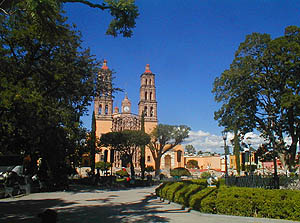The large central plaza of Dolores Hidalgo is conceived as a lush garden, with curving paths lined with vegetation, and a variety of trees and plants. The cathedral of Nuestra Senora de Dolores dominates the north side of the plaza with it's tall twin-towered facade and exuberantly Churrigueresque portal panel, and the adjoining chapel and cloister on the east, or right side of the picture. On the west side is the dark red colored Presidencia Municipal, with it's continuous arcades on 3 sides, this contains government offices organized around an interior courtyard with a vaulted glass roof.
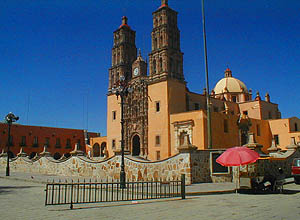
The facade of the cathedral of Nuestra Senora de Dolores is dominated by the tall twin towers with their 3 story pavilions on top. Between the towers there is an exuberantly Churrigueresque front panel with deep triple pilasters framing an arched doorway below and a small square window at the second level. A broad set of stone steps leads up to the doorway, and there is a large clock above the portal panel. The bases of the towers are treated as stucco walls with small rectangular windows.
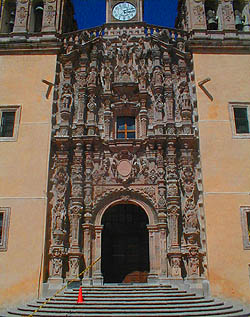
In the center of the Plaza Principal a circular lawn trimmed with hedges encloses the base and pedestal bearing the statue of Miguel Hidalgo, the father of modern Mexico. A rusticated round base carries a square stone pedestal with corner pilasters and bronze sculptural panels on the sides. Above this a tall white marble pedestal bears the bronze statue on top, it has 4 bronze eagles guarding the corners at the base, and bronze feathers and scrolls on the shaft. Hidalgo is depicted instride in a Toga, exhorting the people with his raised right arm, while carrying the banner of independence on his left.

This view is looking west
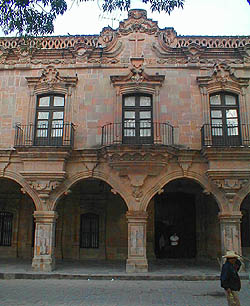
The Nino del Arbol de la Noche Triste, or sapling of the tree of the sad night, takes up a large space in the southeastern part of the Plaza Principal. It's ancestor is said to have been the tree under which Hernan Cortez wept and then slept, when he and his soldiers were driven out of Tenochtitlan in 1520. The child has since become an enormous tree with thick boughs of green needles, which form a circular space around the gnarly old trunk. Beyond the veil of the foliage, the twin-towered facade of the cathedral is faintly visible in the background.
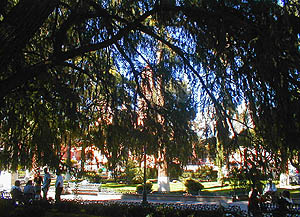
This view is
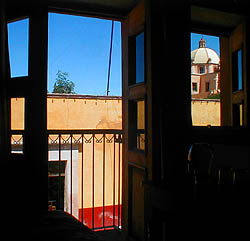
This view is
